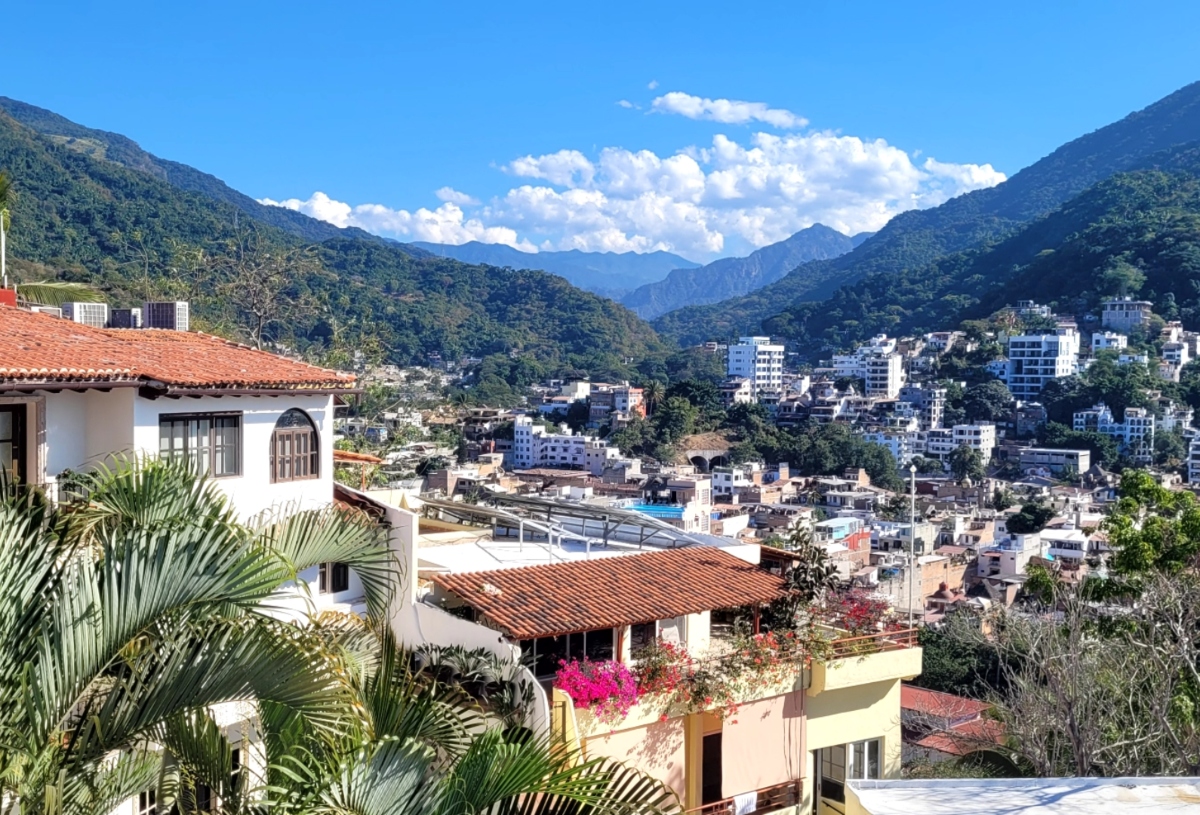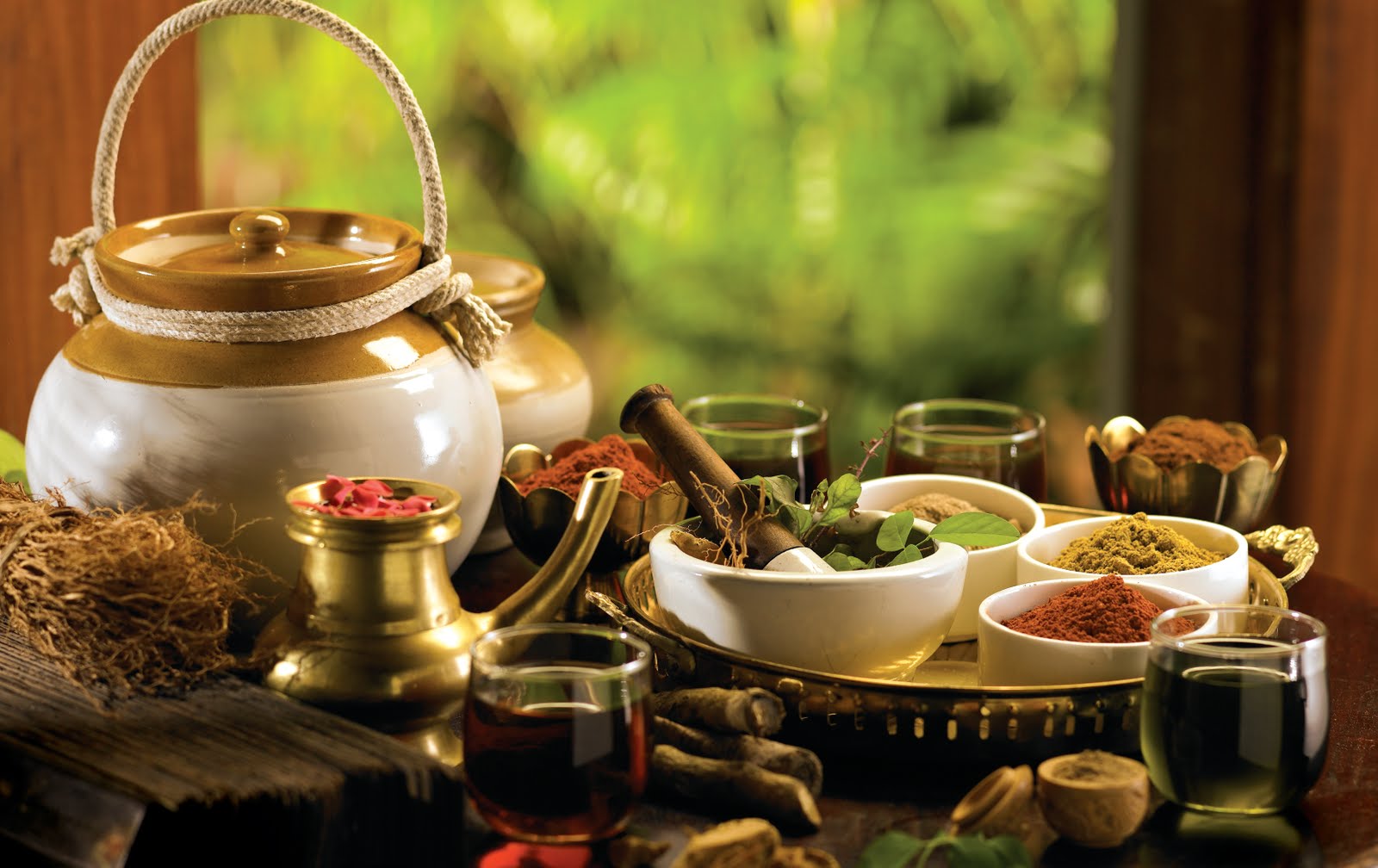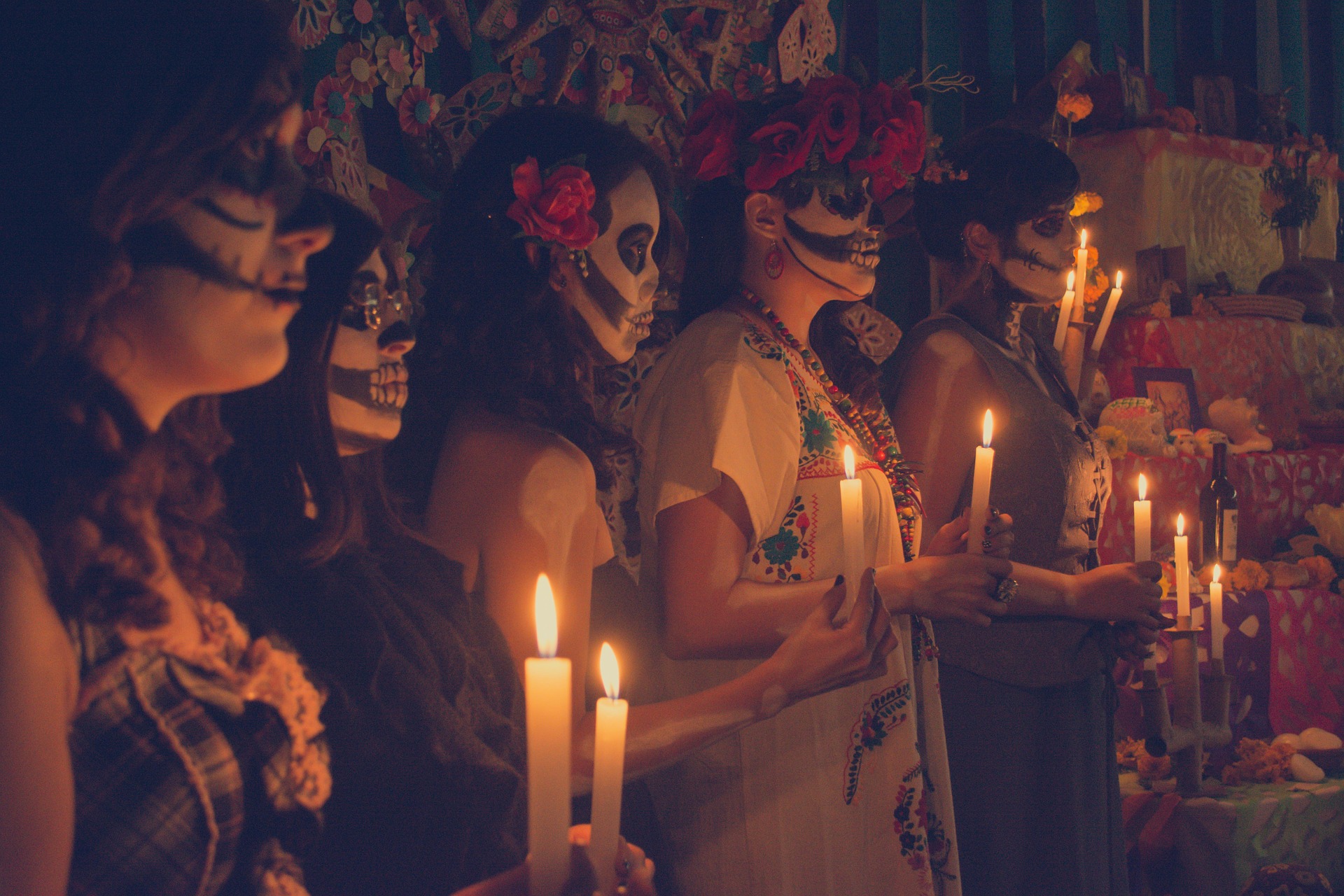
Let us celebrate Day of the Dead
October 27, 2021
Day of the Dead is a celebration full of mysticism and spirituality. It also denotes the festive spirit of the Mexican soul. Solemnity and a joyous atmosphere amalgamate.
My father was a fan of the award-winning movie Macario. A poor, indigenous man who fancied eating an entire turkey by himself. When he finally does so, he doesn´t share it with anyone. Death appears and he invites her to stay.
Macario: “I said to myself, here she comes, if I share the turkey with her, maybe she will grant me time to eat a little more”.
Death: “Oh, Macario! I like you already, just because of that!”
Macario is the reflection of the Mexican making deals with death. Insolently, we laugh with her and we even consider ourselves her buddies.
The origin of the celebration
After the Spanish conquest, this Pre-Hispanic celebration of the dead turned into a festivity which emerged from the syncretism of Catholic religion and indigenous customs. It has been manifesting in diverse ways due to the ethnic plurality of the country. For native Mexicans, life and death give sense to each another. The Day of the Dead festivity marks the harvest of the first fruits to be shared with the ancestors, having ceremonial relevance and representing the identity and world view of each ethnic group. The significant dates in November are: Day 1, All Saints Day. Day 2, All Souls Day. But the folk custom celebrates children on the 1st day and deceased adults on the 2nd.
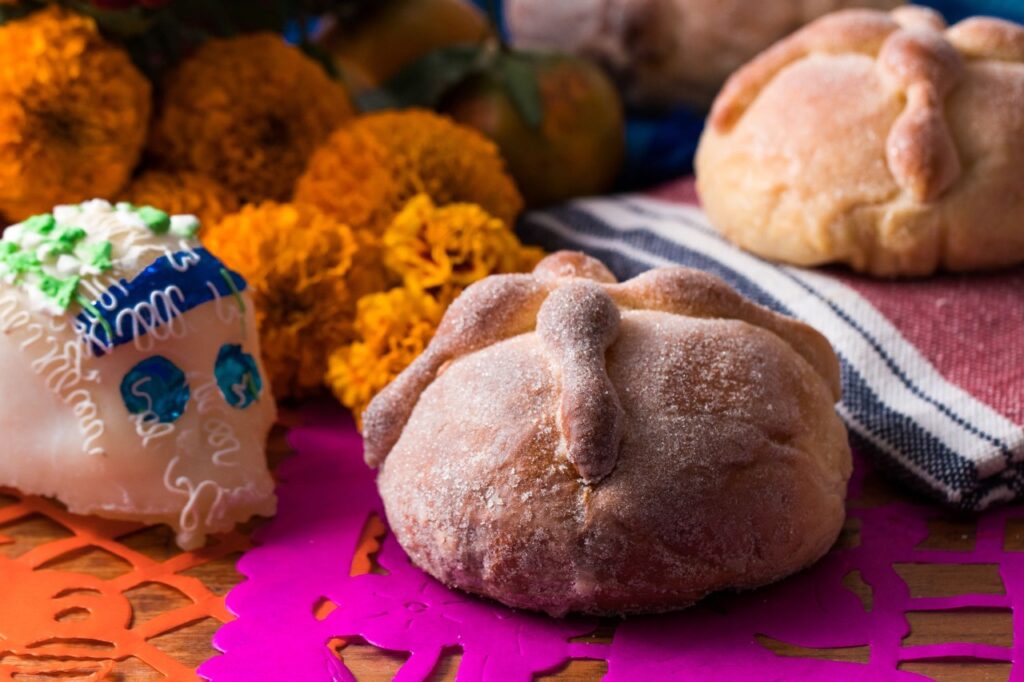
Traditions vary from one ethnic group to another. Some even celebrate from October 15th through November 3rd. In the ethnic group Chontales, dead people stay for a month, coexisting in a quotidian way with the living. Commemoration is on the following days: October 28: those deceased by accident. On October 29: people who have drowned. October 30: lone souls and newly deceased. October 31: the unborn and ancestors. November 1st: children. November 2nd: deceased adults.
Day of the Dead v. Halloween
Day of the Dead is different from Halloween. Halloween is a pagan feast derived from the Celtic festival, Samhain, which celebrated the end of harvesting time. The Catholic Church wanted to supersede it with a commemoration for all saints, calling it All-Hollows-Eve. This term later became Halloween.
Even though both celebrations focus on the dead, the view of each one varies. Halloween often portrays the idea of fear of the dead. Lanterns chase away the spirits. Costumes both scare and protect. On the contrary, on Day of the Dead, we welcome souls of our beloved ones with great joy, in festive expressions. Candles and fragrant Mexican marigold flowers guide their way.
We build colorful altars for them. They are decorated with candy skulls, pictures of the deceased, and their favorite foods. Once the souls have, “taken the essence of the food,” family members eat it. The living and the dead mingle together again, in a typical and ephemeral gathering of a Mexican family.
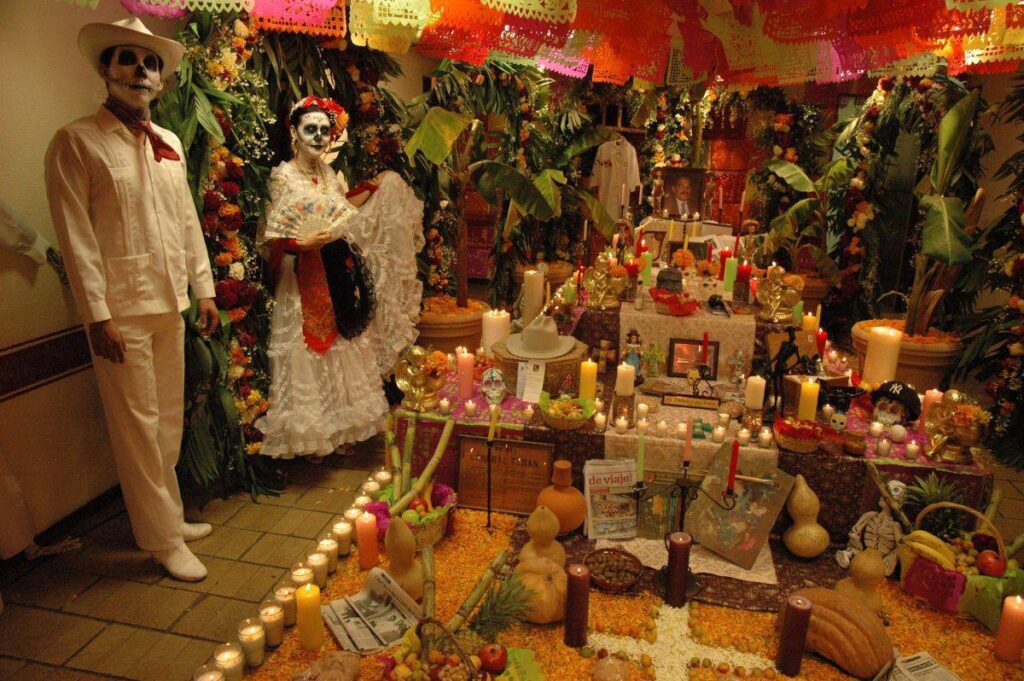
The idiosyncrasy of Mexican national character, where cult of death is important, is clearly evident in our popular sayings: Marriage is life or death, there´s no middle ground. Every man dies, however not every man lives. The dead to the casket, the living to the banquet. Or like every Mexican has sung after a few tequilas or missing our land while abroad: “México lindo y querido, si muero lejos de ti…” (“Beautiful and beloved Mexico, if I die far away…”.)
The familiarity Mexicans have with death is present in the impertinent nicknames for “her”: the skinny, the toff, the bold, the democratic, the toothy, the missing-teeth, the buddy, the faithful girlfriend…
You may also like: Mexican cuisine, changed and forgotten?
Mexicans joke about everything, even about death; that is reflected in the unique, picturesque manner of saying that someone has died: The bony one took him, he kicked the bucket, he danced with the ugliest one, he hung the sneakers, he turned in his equipment, he put on his wooden pajamas, and he has left in the non-returnable case…
Day of the Dead is a colorful representation of the Mexican view of death, full of allegories and meanings. It is so unique, that it is distinguished by the UNESCO as a Masterpiece of the Oral and Intangible Heritage of Humanity.
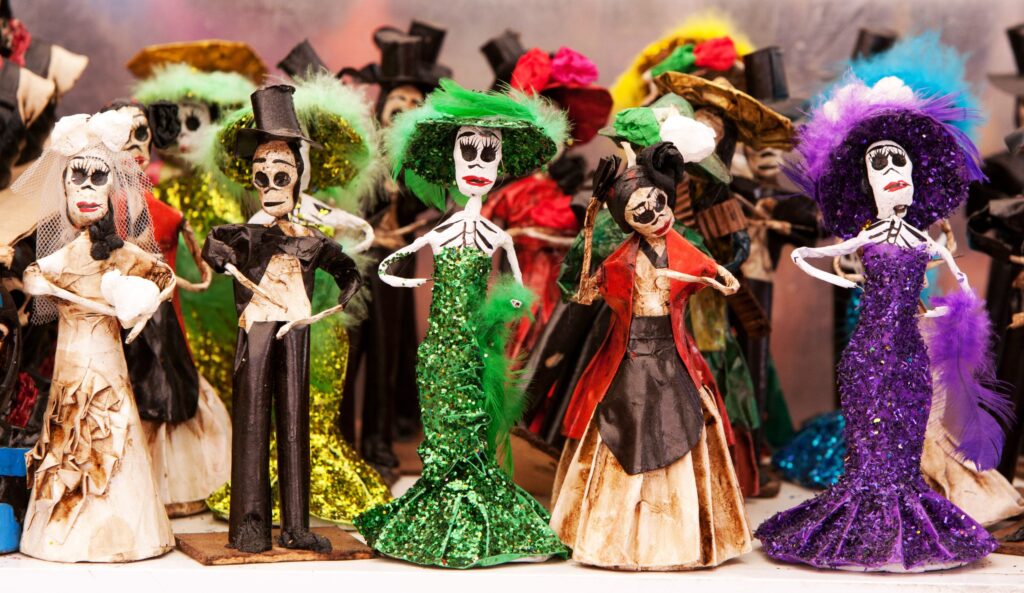
------ADVERTISEMENT------
------ADVERTISEMENT------
------ADVERTISEMENT------
------ADVERTISEMENT------

